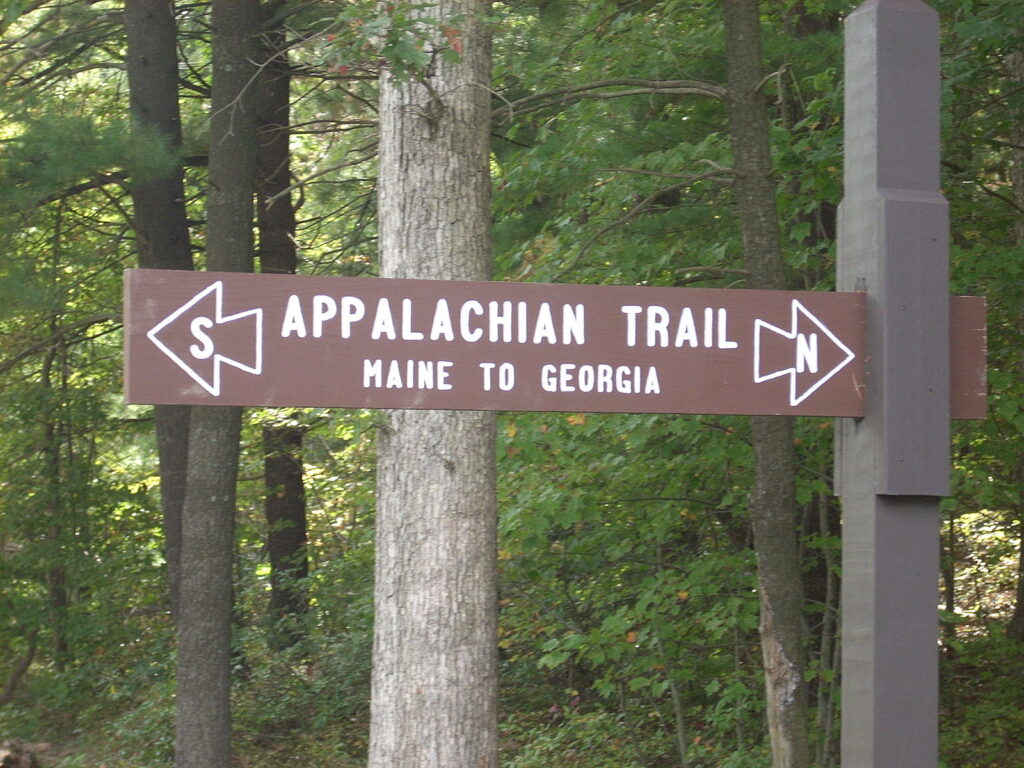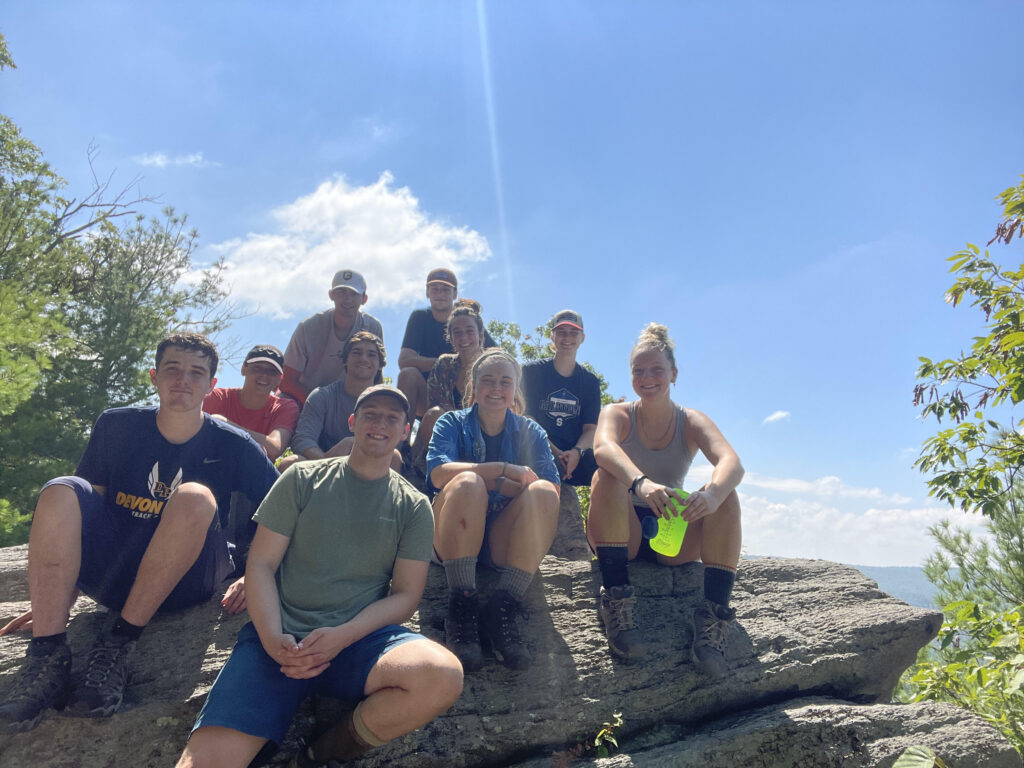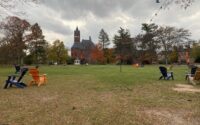How Hikers can Solve the Appalachian Trail’s Problems
By Wilson Schultz
Over the past decade, the Appalachian Trail (AT) has seen a major uptick in the number of visitors it has seen. This uptick, recently caused by the COVID-19 pandemic as well as the normal rising numbers that the trail sees every year, is causing large amounts of irreversible ecological damage to the trail and its surrounding areas. Many hikers on the trail believe the solution is to “hike on your own” to lower the congested numbers on the trail and its offshoots, but it’s not as simple as that (Yuhas 2020).
The Appalachian Trail is hiked by over 2 million people annually. This means that every year, those who care about the 2,200-mile trail are faced with the challenge of keeping it clean for when they will be met with even more people the next hiking season.

The Gettysburg Connection
Gettysburg students are part of these numbers. I interviewed Chris Fahy, a Junior at Gettysburg College and an avid hiker of the AT. Fahy said that pollution and trash “ruins [his] authentic experience of nature” and quite bluntly put “I dislike when the trail is full of garbage”. If hikers can give back to the trail and put in work to keep it clean, then many can have the opportunity to enjoy it more.
You don’t even have to be an avid hiker to get on the AT. Gettysburg College has been providing the pre-orientation experience, Ascent, that allows first-year students to experience the outdoors and form relationships with their first year and upper classmen peers. Just this year, the program sent two groups onto the AT. Bailey Ytterdahl, a current Gettysburg College senior who led Ascent with me, and another Gettysburg Student, Tess Rodgers, this august, said that the experience, “is nice for students to get to know each other and have that bond of friends before orientation.” She continued “since these kids have come from places where they might not have been backpacking before, the AT is a really good, well-maintained trail to give students a great first [backpacking] experience.” Not only this, but Ytterdahl claimed that ascent was “a great place to instill the principles of Leave No Trace.”

Spaces in Jeopardy
It’s clear that these places are in jeopardy. During Ascent this year, when staying at an established shelter on the trial, Bailey, Tess, and I noticed the effects that overuse was causing at this site. The outhouse at the shelter was plagued with graffiti and barely in working order, and we could find trash littered around the picnic tables next to the shelter itself. Though these shelters are created for the use of many backpackers, it does not necessarily mean they shouldn’t be treated with the same respect as the rest of the trail, and they are certainly experiencing the blunt of the degredation that the trail gets.
The pollution isn’t just a local problem and occurs along the AT and its offshoots. Take Max Patch, a popular spot to camp on the AT in Pisgah National Forest, North Carolina. This site had to be placed under a two-year camping ban in July 2021 due to “a significant increase in visitors over the past decade” (Barnhart 2021). The Appalachian Trail Conservancy (ATC) has even been urging hikers to “please stay away from the Appalachian Trail”, their pleas coming from both wanting to stay covid safe and protecting the trail from overcrowding (Bruffey 2020).

Organizations on The Front Lines
There are many entities that make up the protectors of the AT. Organizations, clubs, and parks such as the Appalachian Mountain Club, Nature Conservancy, and Baxter State Park also strive to heal the trail from damage. Most of the time, local organizations are directly responsible for maintaining their section of the trail and advocating for legislation that benefits it. While more global organizations like the Nature Conservancy strive to bring volunteers to needed areas and create a community of stewards. Locally, in Adams County, The South Mountain Partnership promotes landscape resources and encourages stewardship.
The Appalachian Trail Conservancy recommends procedures for hikers to follow as they visit the AT and aims to conserve it for the use of future generations. The main initiatives that the ATC focuses on are “high priority tracts” such as “maintaining the footpath; maintaining the currently protected lands surrounding the Trail; and conserving the Landscape,” three massive undertakings. The organization wants to make sure that sections which have had the most damage done to them can recover (Bruffey 2021).
But these organizations can only do so much. The fact of the matter is that hikers are in a position to do the most for the trail. While high-impact initiatives are very impactful, it is obvious that both the casual and more devoted hiker needs to be a better steward to keep the trail available for them and future generations. Low-impact initiatives such as the principles Leave No Trace (LNT) make a difference. If every hiker is attentive to the trail and these rules, the effects add up.
For those interested in the 7 Principles of Leave No Trace, they are as follows:
- Plan Ahead and Prepare
- Hike and Camp on Durable Surfaces
- Dispose of Waste Properly
- Leave What you Find (Take Only Pictures)
- Minimize Campfire Impacts
- Respect Wildlife
- Be Considerate of Others
To read more on Leave No Trace and what exactly each principle is emphasizing, visit https://lnt.org/why/7-principles/.
© Leave No Trace: www.LNT.org
What You Can Do
While it is true that no hiker begins their day on the trail with the goal of endangering the land and the animals that live on it, it is still a likely outcome of their use. Don Owen, a writer for the American Trails Association, writes that hiking and overcrowding can cause “vegetation loss and compositional changes, soil compaction, erosion, and muddiness, exposure of plant roots, trail-widening, and the proliferation of visitor-created side trails” (2005). Seeing as this information was gathered from a study done by U.S. Geologic Survey Recreation Ecologist Jeff Marion in 2001, this issue is not new.
The state and cleanliness of the trail means something. According to a 2018 study done by Peterson et al., hikers “that experience acceptable social and ecological conditions are more likely to act as trail stewards”. This means that if you care about the trail, whether it be the AT or another, it is crucial for you to keep it clean so others can enjoy it and be good stewards as well.
“I think it’s all covered in [Leave No Ttrace]” said High Garst when asked for tips on how to be a better park steward. “The AT is public land, recognizing your ownership of that space and the part you play in keeping it clean and tidy [is important]”. Garst is a Gettysburg College Alumni who led Ascent during his time on campus, and recently thru-hiked the AT in 2019.
“I think that people should be conscious of that as they walk through, picking up trash, moving things back where they should be, closing gates behind you, [etc.] . . . because public land is a gift that we have”.
Updated on 11/18/2021 to change the uses of LNT to leave no trace as the company suggests and added the leave no trace copyright.
References
Bruffey, D. (n.d.). 2,000-milers. Appalachian Trail Conservancy. Retrieved November 4, 2021
Bruffey, D. (n.d.). Advocacy. Appalachian Trail Conservancy. Retrieved November 4, 2021


